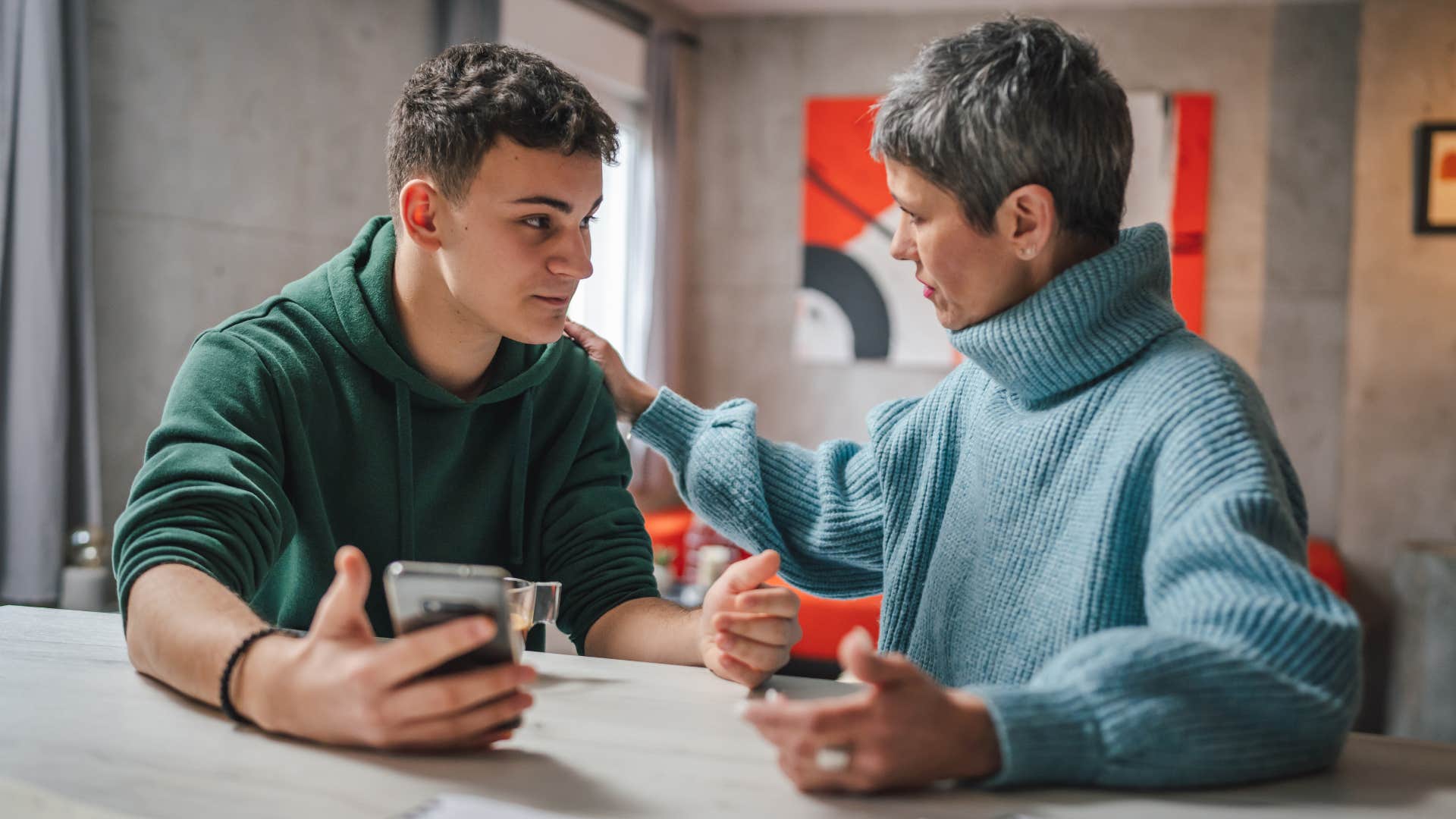11 Unique Things Kids In Upper Middle Class Families Experienced That They Thought Were Normal
If you grew up in an upper middle class household, you've likely taken one or more of these experiences for granted.
 Evgeny Atamanenko | Shutterstock.com
Evgeny Atamanenko | Shutterstock.com Considering the number of American families considered to fall into the middle class has decreased in the past several decades, as a study from the Pew Research Center shows, it’s important to recognize that there are several unique things kids who grew up in upper middle class families experienced that they thought were normal but were actually far from it for many.
Our financial circumstances play a significant role in our social and professional lives. So it’s not only basic necessities like housing that people who didn't grow up in financial comfort missed out on, but a variety of life-shaping experiences and opportunties.
Here are 11 unique things kids in upper middle class families experienced that they thought were normal
1. Going on vacations often
 Yaroslav Astakhov | Shutterstock.com
Yaroslav Astakhov | Shutterstock.com
The average cost of a one-week vacation for a family of four in 2024 was estimated to be about $7,936, a number that’s steadily increased as inflation affects hotel and airfare prices, food, and unexpected expenses. Despite once being considered a motivating force for working class families — allowing them a break to recharge, relax, and bond together — taking a vacation is now almost inaccessible for the shrinking middle class.
Annual vacations are one of the unique things kids in upper middle class families experienced that they thought were normal for everyone. While upper class families and their kids have the opportunity to take a break from it all on a regular basis, people in less financially secure households go without this boost their well-being.
According to LendingTree, some families are even taking on debt in order to get the rest associated with vacations, putting their financial stability at risk for temporary fun, comfort, and connection.
2. Being able to ask their parents for money
 Miljan Zivkovic | Shutterstock.com
Miljan Zivkovic | Shutterstock.com
While upper middle class kids are comfortable borrowing a parent’s credit cards for hangouts with friends, indulging in third places that have become inaccessible for many others, kids from middle class and lower income households are stuck pinching pennies — budgeting to simply pay for basic necessities like groceries and rent.
Not only does this tendency contribute to the social isolation for many lower income kids growing up, it can cause resentment at home, as young kids feel “left out” from hanging out with friends, going on class trips, or affording the newest status symbol cherished by the other kids at school.
3. Buying groceries as often as they want
 Fizkes | Shutterstock.com
Fizkes | Shutterstock.com
Considering nearly half of adults don’t have emergency or savings funds, according to a Bankrate survey, the majority of lower and middle class families must budget down to the last penny to afford their basic necessities and bills every month.
As grocery prices rise, it’s not only food insecurity that middle class families are facing at a disproportionate rate — it’s the freedom of spontaneity, choice, and comfort.
While upper middle class families have the freedom to stop by the store for a last-minute meal or even go grocery shopping everyday depending on their dinner plans, middle and lower class families feel pressure to organize and plan out their eating habits, even though they may have less time and energy to spare from working long hours and multiple jobs.
4. Having multiple cars at home
 Prostock-studio | Shutterstock.com
Prostock-studio | Shutterstock.com
According to a Pew Research Center study, over one-third of American families only have one car for their entire household. On top of parents' work schedules and their kids' extracurricular activities, middle class families already struggling with managing their small pockets of time must rely on public transportation to get where they need to go.
In rural and suburban areas, which are becoming less and less walkable for the average person, not having a car or access to safe, reliable public transportation can both put kids and their parents at risk and also isolate them from activities and opportunities that upper middle class families don’t think twice about engaging with.
Freedom of transportation is just one of the unique things kids in upper middle class families experienced that they thought were normal — along with the status and opportunities for social connections they were privy to as a result of their family’s multiple cars — possible even including one of their own.
5. Having a consistent nanny or babysitter
 Fizkes | Shutterstock.com
Fizkes | Shutterstock.com
According to the Berkeley Economic Review, the average American family spends nearly $300K raising a single child to the age of 17 — from groceries, to childcare, education, and more. It's not cheap to have children. Even if you’re considered middle class making between $50K and $120K annually, the unexpected costs and financial strain of caring for a child, especially early in life without concrete financial stability, can put a strain on every aspect of a lower income family’s life, from their relationships to their personal health and well-being.
While having a consistent babysitter or a nanny at home is one of the unique things kids in upper middle class families experienced that they thought were normal, kids in more insecure situations stay with family members, inconsistent babysitters, or even stay home alone.
Especially for parents with multiple jobs, planning and budgeting for childcare can be a huge expense, considering the average cost has risen over 22% in recent years according to data from a Health Care Cost Institute report. While some lower class families choose for a parent to stay home with their kids to offset these rising costs, others continue working — reliant on a double income or career advancement in an ever-changing insecure job market.
6. Attending well-funded schools with advanced classes
 Ground Picture | Shutterstock.com
Ground Picture | Shutterstock.com
A study published by the American Educational Research Association found that there is an unsettling "opportunity gap” between lower income students and their higher income counterparts. Not only are upper middle class families more likely to send their kids to private and better-funded public schools, with plenty of advanced classes and programs to set them up for future success, they also tend to be offered more opportunities.
From extracurricular activities to community involvement, funding, advanced classes, and networking, students from upper middle class families are generally better set up for success early in life in the classroom and in their communities than lower income students are.
While higher income students may criticize their schools, fight with their parents about going to a sports practice, or complain about homework from their AP courses, they may not realize the opportunities these experiences open for them and the true privilege they have to be engaging in them at all.
7. Access to quality healthcare
 ORION PRODUCTION | Shutterstock.com
ORION PRODUCTION | Shutterstock.com
When you got sick as a child, what was your first thought? Was it, “Maybe, I’ll be able to stay home from school tomorrow?” or was it something closer to, “I hope mom doesn’t need to stay home from work,” or, “Can my parents afford cold medicine?”
While healthcare inequity and inaccessibility is becoming more of a problem for people at all income levels, with high deductibles and the exorbitant cost of healthcare coverage, many lower income individuals are taking on more severe burdens. From losing out on the benefits of preventative care like an annual doctor’s check-up, low cost medications, or sport’s physicals to being unable to seek affordable care when someone is sick, many lower middle class and poor families don’t have the freedom of healthcare in their routines.
Already budgeting heavily and sacrificing small joys to pay for necessities, getting an unexpected healthcare bill for a sick child or a sports injury can be truly devastating, putting families at risk for further financial isolation and instability.
8. Access to family members with connections in affluent industries
 Ground Picture | Shutterstock.com
Ground Picture | Shutterstock.com
Part of the reason for America’s unequal distribution of wealth — how “the rich get richer, while the poor get poorer” — is the tendency for wealthier families to have more opportunities and connections than their less affluent counterparts. Not only do their kids have the ability to leverage their parents’ professional success in the academic, social, and career-focused aspects of their lives, but they also have the knowledge that’s necessary to acquire in order to succeed.
From helping with college applications to teaching financial literacy and being the bridge between connections with affluent people and their kids, parents with the knowledge to help their kids succeed is important.
While accessibility to this knowledge is one of the unique things kids in upper middle class families experience that they thought were normal — contributing to many’s "bootstrap mentality” beliefs and misguided views of impoverished communities — it’s truly a luxury and privilege not everyone gets.
9. Internet, technology, and cellphone access at home
 Evgeny Atamanenko | Shutterstock.com
Evgeny Atamanenko | Shutterstock.com
Especially in the age of online learning and remote work, many lower income families without high-speed Internet access or technology for their children have fallen behind, not just academically, but also socially. Not only are parents less likely to have the opportunity to work from home, saving on transportation and sometimes childcare costs, their kids are less supported educationally — especially with online homework, educational resources, and support for curious learning habits.
According to data from the U.S. Census Bureau, nearly 12 million American households don’t have high speed Internet access at home, isolating their kids from their friendships and social connections online and preventing them from being able to do their online school work.
Coupled with a lack of accessible transportation, having to get to a library or get to school early to finish homework can place an unreasonable burden on kids in lower income families as compared to wealthier kids who can do their work from the comfort of their homes.
10. Going to summer camps
 PeopleImages.com - Yuri A | Shutterstock.com
PeopleImages.com - Yuri A | Shutterstock.com
Upper middle class kids, already more privy to travel sports teams and extracurricular activities, are also more likely to spend time at summer camps when they’re not in school than kids from less financially secure homes. Given how expensive they are, summer camps have become one of the unique things kids in upper middle class families experienced that they thought were normal.
Many lower income kids are left to fend for themselves when they’re not in school, especially in households that can’t afford adequate childcare. While wealthier kids are given the opportunity to make new friends and experience different environments, their lower income counterparts are unfairly isolated during the time of year when they can't get the social connection that school provides for them during the academic year.
11. Living in a home with green space
 Liderina | Shutterstock.com
Liderina | Shutterstock.com
While having enough space and bedrooms for your family is a privilege in itself, the ability to connect with nature and have private green space to utilize is a unique thing many kids who grew up in upper middle class families didn't realize others would consider a luxury.
From having space to plant a garden to letting kids safely indulge in productive unsupervised play in their own backyard, kids from upper middle class families not only benefit socially, but also physically and emotionally.
Of course, lower income communities also tend to be at a disadvantage when it comes to accessible public green spaces and nature-focused third places, as they are typically located in urban areas with less favorable air quality, noisier streets, and less walkable roads. From experiencing higher rates of isolation to being unable to leverage the healing power of nature and fresh air in their own communities, many people in lower income households yearn for the space that kids in upper middle class families take for granted.
Zayda Slabbekoorn is a staff writer with a bachelor’s degree in social relations & policy and gender studies who focuses on psychology, relationships, self-help, and human interest stories.
